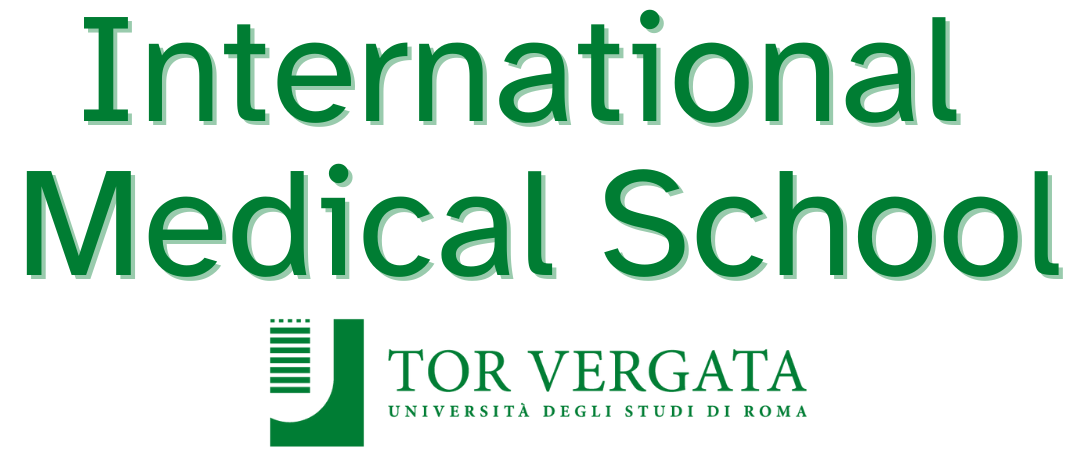
IMAT a.y. 22-23
04/07/2019Call to partecipate to 2022-23 A.Y. IMAT test: open from the 1st of July to 15:00 (Italian time) of the 22th of July 2022.
Information
IMAT admission test is scheduled to take place on September 13th 2022 in several places around the world.
The International Medical Admissions Test (IMAT) is a 100 minute subject-specific admissions test for applicants to medicine and surgery courses. the Italian Ministry of Higher Education and Research (MIUR), together with Cambridge Assessment develop and deliver the English language version of the Italian admissions test already used for entry to courses taught in Italian. IMAT is used by any state universities.
You can take the test at one of the international medical schools that require IMAT (the one that you select as your first choice) OR at one of the many authorized test centres around the world. You will be able to find a list of test centres on the IMAT website nearer the test date: admissionstesting.org/imat . You can download free past papers and the test specification from the IMAT website. These will help you to become familiar with the test format, question style and timing: admissionstesting.org/imat-prep
At CINECA, the responsible office of the MIUR will authorize CAMBRIDGE ASSESSMENT, subject to compliance with the procedures set forth in this call, the computerized checking of answers provided by candidates in the test and the following automatic determination of the relevant score. CAMBRIDGE ASSESSMENT determines the score of each candidate and transmits the results to CINECA through a site specifically designed for this purpose.
The test does not require a lot of extra study as it is a test of skills and knowledge that learners are expected to have already.
Test format
The admission test consists of sixty (60) multiple choice questions with five options (of which only one is correct) on the following topics: general knowledge and logical reasoning; biology; chemistry; physics and mathematics. The test is divided in four sections. Section 1 (20 multiple choice question overall) covers general knowledge (10 questions) and logical reasoning (10 questions about critical thinking and problem solving). Sections 2, 3 and 4 cover science-based sections (40 questions overall): biology (15 multiple choice questions), chemistry (15 multiple choice questions), physics and mathematics (10 multiple choice questions).
The detailed program of the 2022 test is available in the Allegato A (IT) or EN of the Decreto Ministeriale (IT) or see below (English)
IMAT is divided into four sections: Section 1: General Knowledge and Logical Reasoning.
Section 2, 3 and 4: Scientific Knowledge covering Biology, Chemistry, Physics and Mathematics.
Section 1 – General knowledge and logical reasoning: General knowledge; generic skills in problem solving, understanding argument, data analysis and inference. (20 multiple-choice questions)
Section 2, 3 and 4 – Scientific Knowledge: The ability to apply scientific knowledge from school science: Biology, Chemistry, Physics and Math. (40 multiple-choice questions)
Scoring and results
A candidate’s total score is calculated using the following formula:
- 1.5 points for each correct answer
- -0.4 points for each wrong answer
- 0 points for each question not answered.
An overall total score will be reported, together with a score on each section.
The rankings will be published on accessoprogrammato.miur.it.
International Medical School of Tor Vergata University does not recommend any official preparation material. Applicants may find it useful to practice using the handbooks especially prepared for the admissions test to the degree courses in Medicine and Surgery taught in English at the Italian Universities (IMAT). Handbooks can be purchased online. The IMAT is a pen-and-paper test. Please note that calculators are not permitted.
A typical IMAT test can be found here (2013 sheet in which the answers have been rearranged so that the correct one is always A, with the exception of question 14 for which the correct answer is C).
Other IMAT tests can be found here (2011), here (2012), here (2014), here (2015), here (2016), here (2017), (in these tests the answers have been rearranged so that the correct one is always A) here and here (results)(2018) and here and here (results) (2019), here (2020) and here (2021) (in these tests the answers have been rearranged so that the correct one is always A).
IMAT general program
The exam will include questions on the following topics:
The exam will measure the ability to use the Italian language correctly and to complete a form of logical reasoning in line with the task, which will be proposed symbolically or verbally in the form of multiple choice questions also with short phrases, where the applicant must exclude the wrong, arbitrary or least probable conclusions.
The questions will regard scientific texts, extracts of classic or contemporary authors, current affairs texts taken from newspapers or general and specialized magazines. The questions will also regard cases or problems of an abstract nature and the solutions to these questions will require various forms of logical reasoning.
General knowledge questions linked to students general secondary school education will complete the exam.
Regarding the historical field, the questions may concern, among other things, aspects that have characterized the history of the 20th century and the world today (industrialization and post-industrial society; fundamental rights; new subjects and movements; the welfare state and its crisis; globalization processes and conflict in the global world).
Concerning the social and institutional sphere, in accordance with the national indications and guidelines and in relation to the activities carried out for “Citizenship and Constitution”, the questions may concern among other things, the Constitutional Charter, communication and the mass media, the organization of the economy and the political system; the various forms of State and government.
This assessment will be completed with questions relating to general culture in the supranational sphere, on issues covered during school studies or present in contemporary public discourse.
The chemistry of living beings
The biological importance of weak interactions
The organic molecules present in organisms and their functions. The role of enzymes.
The cell as the basis of life.
Cellular theory. Cellular dimensions. The prokaryotic and eukaryotic cell, in animals and plants. Viruses.
The cell wall: structure and functions – transport across the membrane.
The cell organelles and their specific functions.
The cell cycle and cellular reproduction: mitosis and meiosis – chromosomes and chromosome mapping.
Bioenergetics.
The energy levels of cells: ATP.
Oxidation and reduction events in living organisms.
Energy pathways: photosynthesis, glycolysis, aerobic respiration and fermentation.
Reproduction and inheritance.
Life cycles. Sexual and asexual reproduction.
Mendelian genetics: Mendel’s laws and their applications.
Classic genetics: the chromosomal basis of inheritance – inheritance models.
Molecular genetics: structure and duplication of DNA, the genetic code, protein synthesis. Prokaryotic DNA. The structure of the eukaryotic chromosome. Genes and the regulation of gene expression.
Human genetics: the transmission of mono and poly-factorial characters; hereditary diseases linked to autosomes and the X chromosome.
Biotechnology: the technology of recombinant DNA and its applications.
Inheritance and the environment.
Mutations. Natural and artificial selection. The theories of evolution. The genetic basis of evolution.
The anatomy and physiology of animals and man.
Animal tissue.
Anatomy and physiology of systems in man and their relative interactions.
Homeostasis.
The composition of matter: Aggregate states of matter; heterogeneous and homogeneous systems; compounds and elements.
The ideal gas laws.
Atomic structure: elementary particles; atomic number and mass number, isotypes, the electronic structure of the atoms of the various elements.
The periodic table: groups and periods; transition elements. The periodic properties of the elements: atomic radius, ionization potential, electronic affinity, metal characteristics. Relationship between electronic structure, positions in the periodic table and the properties of the elements.
Chemical bonds: ionic bonds, covalent and metallic bonds. Bonding energy. Bonding polarity. Electronegativity. Inter-molecular bonds.
The fundamentals of inorganic chemistry: nomenclature and principal properties of inorganic compounds: oxides, hydroxides, acids and salts.
Chemical reactions and stoichiometry: atomic and molecular mass, Avogadro’s number, the concept of mole and its application, elementary stoichiometric calculations, the balance of simple reactions, the various types of chemical reaction.
Solutions: the solvent properties of water, solubility, the principal ways of expressing the concentration of solutions.
Aquatic equilibrium.
Elements of chemical kinetics and catalysis.
Oxidation and reduction: oxidation number, the concept of oxidants and reductants. The equilibrium of simple reactions.
Acids and alkalis: the concept of acid and alkalis. Acidity, neutrality and alkalinity of aquatic solutions. PH. Hydrolysis. Buffer solutions.
The fundamentals of organic chemistry: carbon bonds, empirical and structural formulas, the concept of isomerism. Aliphatic, alicyclic and aromatic hydrocarbons. Functional groups: alcohols, ethers, amines, aldehydes, ketones, carboxylic acids, esters, starches. Nomenclature.
Measurements: direct and indirect measurements, fundamental and derived units, the physical dimensions of units, the decimal system, the CGS System, Technical (or Practical) (ST) and International (SI), units of measurement (names and relationships between fundamental and derived units), multiples and submultiples (names and values).
Kinematics: kinematic units, motions with particular attention paid to uniform and uniformly accelerated linear motion; uniform circular motion; harmonic motion (for all motions: definition and relationship between connected kinetic units).
Dynamics: vectors and operations on vectors. Force, moment of a force about a point. Moment of a force couple. Vector composition of forces. Definition of mass and weight. Acceleration of gravity. Density and specific weight. Universal law of gravity, 1st, 2nd and 3rd principle of dynamics. Work, kinetic energy, potential energy. Principles of energy conservation. Impulse and quantity of motion. The quantity of motion and its conservation.
Fluid mechanics: pressure and its units of measurement (not only in the SI system). Archimedes’ principle. Pascal’s principle. Stevion’s law.
Thermology, Thermodynamics: thermometry and calorimetry. Specific heat, thermal capacity. Heat dispersion. Changes of state and latent heat. The laws of ideal gasses. The first and second principles of thermodynamics.
Electrostatics and electrodynamics: Coulomb’s law. Electric field and electric potential. The dielectric constant. Condensers. Parallel and series condensers. Continuous current. Ohm’s law. Kirchhoff’s principles. Electric resistance and resistivity, electrical resistance in series and in parallel. Work, Power, Joule effect. Generators. Electromagnetic induction and alternating currents. Effects of electric current (thermal, chemical and magnetic).
Set theory and algebra, natural numbers, whole numbers, rational and real numbers, the order of numbers; order of magnitude and scientific notation. Operations and their properties. Proportions and their percentages. Exponentiation with real and rational exponents and their properties. Radicals and their properties. Logarithms (base 10 and base e) and their properties. Combined calculations. Algebra, Polynomials. Notable products. The binomial theorem. Algebraic fractions. First degree and second degree linear equations and inequalities. Systems of equations.
Functions: fundamental notions of functions and their graphic representations (dominant, codominant, maximum and minimum, increasing and decreasing etc.). Elementary functions: algebraic fractions, exponentials, logarithms, goniometry. Compound functions and inverse functions. Goniometric equations and inequalities.
Geometry: polygons and their properties. Circumference and area of circles. Measurements of length surface area, and volume. Isometry: equivalence relations. Geometric forms. Measurements of angles in degrees and radians. Sine and cosine, tangents of an angle and their values. Goniometric formulas. The resolution of triangles. Cartesian planes. Distance between two points and middle point of a segment. Line equations. Parallels and perpendicularity. Distance of a point from a line. Equations of circumference, parabola, hyperbola and ellipse and their representations on a Cartesian plane. Pythagoras theorem. Euclid’s theorem (first and second).
Probability and statistics. Frequency distribution according to type of character and principal graphical representations. Notions of casual experimentation. Probability and frequency.
Last Updated on 29/08/2023



